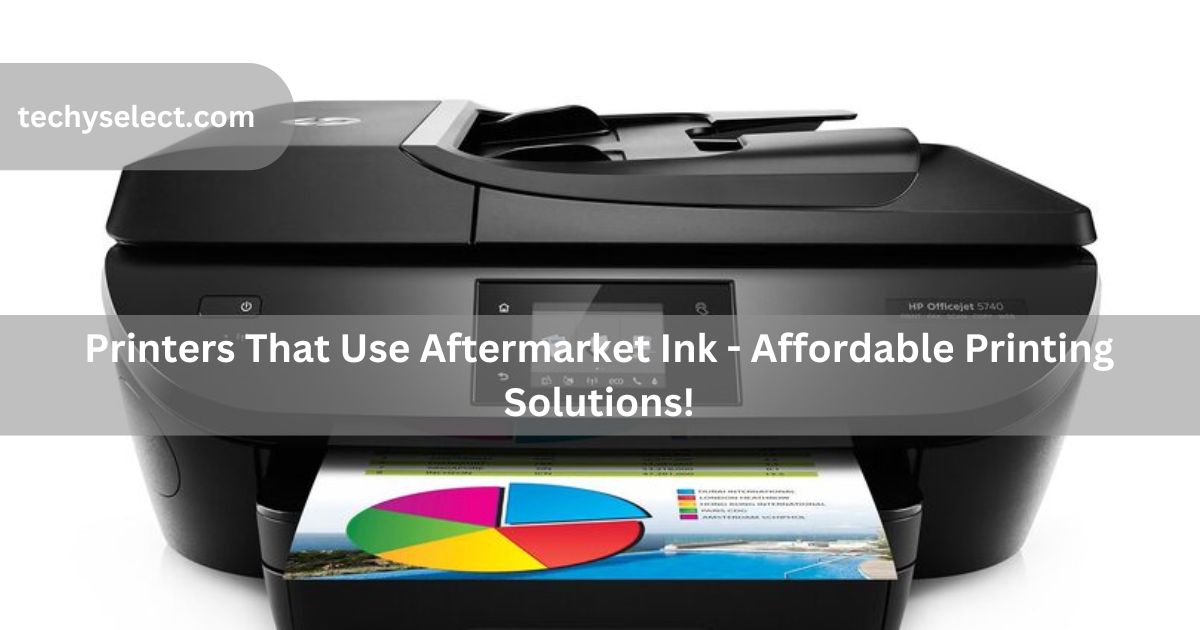I used to buy expensive ink until I found aftermarket ink. At first, I worried, but it worked well! Some printers accept it, saving money. I’ll share my experience and tips.
Printers that use aftermarket ink ( short answer )
Some printers work well with aftermarket ink, helping you save money. Brands like Epson, Canon, and Brother support it. Choose good-quality ink to avoid problems and keep prints looking clear.
In this article we will discuss Printers that use aftermarket ink.
What Is Aftermarket Ink?
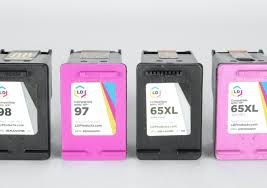
Aftermarket ink is ink made by other companies, not the printer brand. They cost less than original cartridges and work for a lot of different printers. Good aftermarket ink achieves a quality print, but low-grade ink has other effects on fading or clogging. Whenever choosing the right ink, one can save some money while keeping the printer in good working condition.
Why Do People Use Aftermarket Ink?
People use aftermarket ink because it costs less than original ink. It helps save money, especially for students and businesses. Many good-quality options give clear prints. It is also easy to buy in local shops or online. But choosing the right ink is important to avoid printer problems like clogging or faded prints.
Pros And Cons Of Aftermarket Ink
Pros Of Aftermarket Ink:
- Lower Cost: It is much cheaper than original ink, saving you money in the long run.
- Good Availability: Aftermarket ink is widely available in stores and online, making it easy to find.
- Variety: There are many different options for various printer models, giving you flexibility.
- Higher Ink Volume: Some aftermarket inks come in larger quantities, lasting longer than standard cartridges.
- Environmental Benefits: Refillable cartridges and eco-friendly brands help reduce waste.
Cons Of Aftermarket Ink:
- Quality Issues: Print quality may not be that good, with some such inks producing faded or unclear colors.
- Printer Troubles: Inferior aftermarket inks may produce clogging or ruin a head over time.
- Warranty Risks: Using third-party ink may void your printer’s warranty, especially with some brands.
- Compatibility Issues: Not all printers accept aftermarket ink, and some may require special cartridges.
- Inconsistent Results: Some aftermarket inks may work well in one printer but cause issues in another.
Why Do People Choose Aftermarket Ink For Their Printers?
People choose aftermarket ink because it costs less than original ink. It helps save money, especially for those who print often. Aftermarket ink is easy to find in shops or online. Some options offer more ink, so you don’t need to replace cartridges as often. Overall, it’s a cheaper and convenient choice for many users.
Best Printer Brands That Support Aftermarket Ink
- Epson – Many Epson printers, especially EcoTank and InkTank models, work well with aftermarket ink, offering great print quality and savings.
- Canon – Canon’s PIXMA and MegaTank series are known for their compatibility with third-party ink.
- Brother – Brother printers, especially their Inkvestment models, support aftermarket ink and offer reliable performance.
- HP – Older HP models may accept aftermarket ink, though newer models sometimes have restrictions.
- Lexmark – Some Lexmark printers are compatible with aftermarket ink, providing cost-effective alternatives.
These brands offer printers that work well with aftermarket ink, helping you save money while printing. Always check compatibility before using third-party cartridges.
Read Also: What Printer Prints White Ink – Upgrade Your Printer 2025!
How To Choose A Printer For Aftermarket Ink
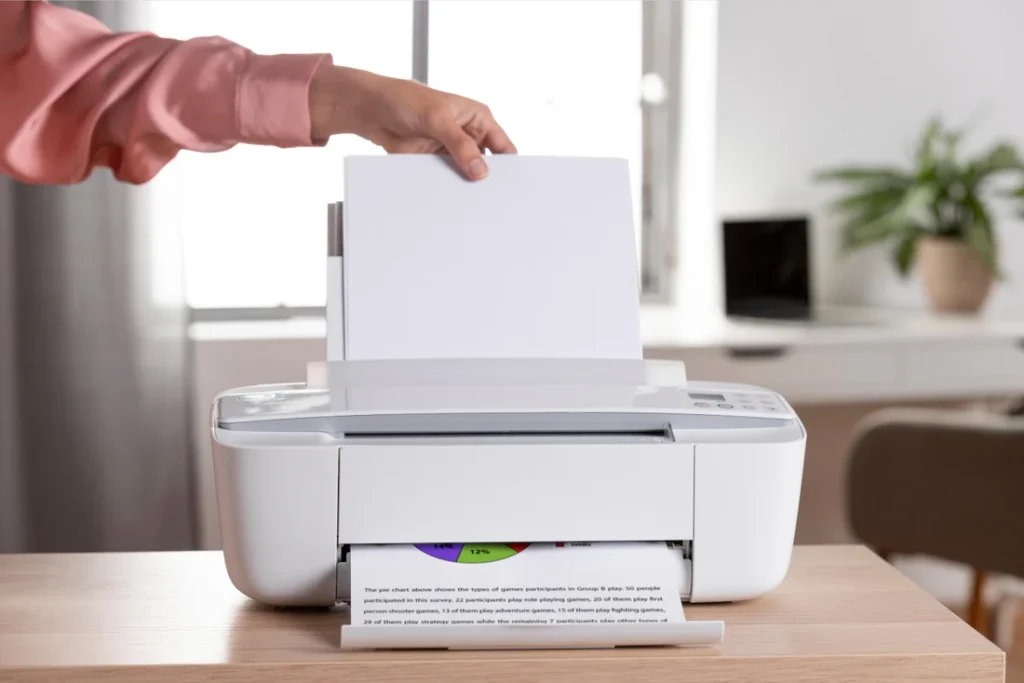
Check Compatibility:
Look for printers known to support third-party ink, such as Epson EcoTank or Brother Inkvestment models. Research online or check user reviews to ensure your chosen model works with aftermarket ink.
Avoid Newer Models With Restrictions:
Some newer printers have built-in chips or firmware that block third-party cartridges. Opt for older or budget-friendly models if you want more flexibility with ink choices.
Consider Refillable Ink Options:
Printers with refillable tanks or cartridges are a great choice for using aftermarket ink, as they offer more room for third-party ink and reduce waste.
Review Cost Vs. Ink Savings:
While the printer itself may be cheap, consider the long-term cost of ink. Printers that support aftermarket ink often have lower ongoing costs compared to those using only original cartridges.
Choose A Printer With Easy Ink Installation:
Look for models that are easy to refill or replace cartridges without complicated steps, helping you save time and hassle when using aftermarket ink.
How To Use A Printer With Aftermarket Ink?
1. Turn Off The Printer And Remove Old Ink
Safety first, so turning off your printer is always a great idea when changing ink. Open the lid and carefully take out the old ink cartridge. Gently do it; be careful not to spill any ink! Make sure you check the cleanliness of the slot before inserting the new ink.
2. Insert The Aftermarket Ink Cartridge

Take the new aftermarket ink cartridge and slide it into the correct slot. Push gently until you hear a click. Make sure the cartridge is seated correctly so you won’t have any printing problems or leakage.
3. Reset The Printer If Needed
Some printers will not recognize aftermarket ink. If an error message is seen, restart the printer. Another option is to take the cartridge out and put it back in to stimulate the recognition of the ink.
4. Run A Test Print To Check Quality
After installation, print a test page to see if the ink is working correctly. If the colors look faded or lines appear, use the printer’s cleaning function to improve print quality. Always check before printing important documents.
5. Maintain The Printer For Better Performance
You should regularly clean the print heads to prevent them from clogging. Keep your spare ink in a cool, dry place. Never update the printer firmware, as doing so may lead to blocking of the aftermarket ink. Maintenance ensures that your printer runs smoothly on third-party ink.
Which Printer Brand To Avoid If Wanting To Use Generic Ink?
- HP – Blocks third-party ink with firmware updates and security chips.
- Canon – Uses smart chips that may prevent aftermarket ink from working.
- Lexmark – Has strict ink systems that don’t support generic cartridges.
- Epson (Newer Models) – Some latest models limit third-party ink use.
- Dell – Requires brand-specific ink, making generic options difficult.
Best alternatives: Brother, older Epson models, or Canon MegaTank series. Always check compatibility before buying.
Wireless Printers That Use Aftermarket Ink
- Epson EcoTank Series – Models like ET-2720, ET-4760, and ET-2850 support refillable tanks and aftermarket ink.
- Brother Inkvestment Series – MFC-J805DW and MFC-J995DW work well with third-party ink and offer wireless printing.
- Canon PIXMA MegaTank Series – Models like G5020 and G7020 are compatible with aftermarket ink.
- Epson Workforce Series – WF-7710 and WF-7720 support aftermarket ink with wireless printing.
- HP Older Models – Some older OfficeJet and Envy printers work with third-party ink.
Always check compatibility before buying to avoid issues with third-party ink.
Do All Printers Support Aftermarket Ink?
Not all printers accept aftermarket inks. For some brands, like HP and Canon, third-party inks may be rendered non-functional through the use of specialized chips or software updates. Many printers, especially older ones or brands like Epson and Brother, are great for aftermarket inks. Always check before buying if your printer presents any compatibility problems with third-party inks to avoid hassles.
Read Also: Smallest Margins For Printing Word – Fit More Content!
What Is The Difference Between Original Ink And Aftermarket Ink?
| Aspect | Original Ink | Aftermarket Ink |
| Price | Higher cost, brand-specific | Lower cost, budget-friendly |
| Quality | High, consistent, optimized for the printer | Varies; can be good or bad depending on the brand |
| Compatibility | Perfect fit for the printer model | May or may not fit depending on the printer |
| Warranty Impact | No effect on warranty | Might void warranty if ink causes issues |
| Ink Capacity | Standard ink capacity | Larger capacity for more value |
| Environmental Impact | Often less eco-friendly (disposable cartridges) | Can be more eco-friendly (refillable or recyclable options) |
| Print Speed | Optimized for fast, smooth printing | May vary; some aftermarket inks can slow down printing due to clogging or inconsistent flow |
Can Aftermarket Ink Damage Your Printer?
Aftermarket ink usually doesn’t damage your printer if you use good-quality ink. Cheap or low-quality ink can cause problems like clogged print heads or poor prints. Some printers may not work well with certain aftermarket inks, leading to errors. To avoid damage, always choose trusted brands and make sure the ink is compatible with your printer.
How To Properly Install Aftermarket Ink Cartridges?
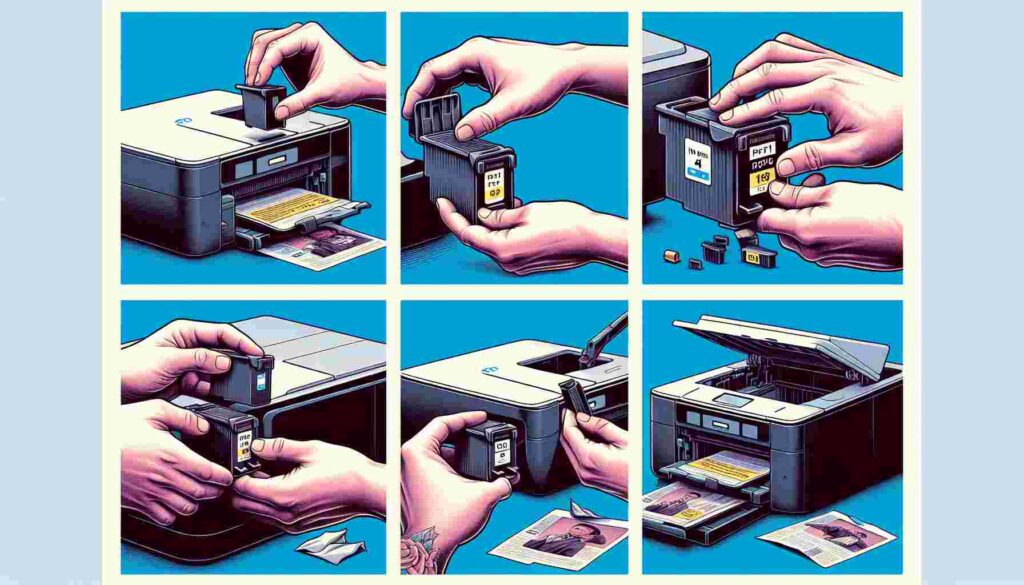
- Turn Off the Printer – Always turn off the printer before changing cartridges to avoid any accidents.
- Open the Printer Cover – Lift the cover to access the ink cartridge area.
- Remove the Old Cartridge – Carefully remove the empty or old cartridge by pulling it out.
- Prepare the New Cartridge – Unbox the aftermarket ink cartridge and remove any protective tape or plastic.
- Insert the New Cartridge – Place the new cartridge into the correct slot and gently push it until it clicks into place.
- Check Alignment – Make sure the cartridge is properly aligned and secure.
- Close the Printer Cover – Once the cartridge is in, close the printer cover and turn the printer back on.
- Run a Test Print – Perform a test print to check if the cartridge works properly and the ink flows well.
This ensures a smooth installation of your aftermarket ink cartridge!
What To Do If Your Printer Rejects Aftermarket Ink?
- Check for Compatibility – Make sure the aftermarket ink is compatible with your printer model. Not all printers accept third-party ink.
- Reset the Printer – Turn off the printer, remove the cartridge, and then turn it back on. Reinstall the ink cartridge to see if it’s recognized.
- Clean the Cartridge Chip – Some printers block aftermarket ink based on a chip. Gently clean the chip on the cartridge with a soft cloth to remove any dust or dirt.
- Disable Automatic Updates – Some printers automatically update their firmware, which may block third-party ink. Turn off automatic updates in the printer settings.
- Try a Different Cartridge – If the issue continues, try using a different aftermarket cartridge from a trusted brand.
- Contact Support – If nothing works, contact the printer or ink manufacturer’s support for help with resolving compatibility issues.
These steps should help you fix the issue when your printer rejects aftermarket ink.
How To Maintain A Printer That Uses Aftermarket Ink?
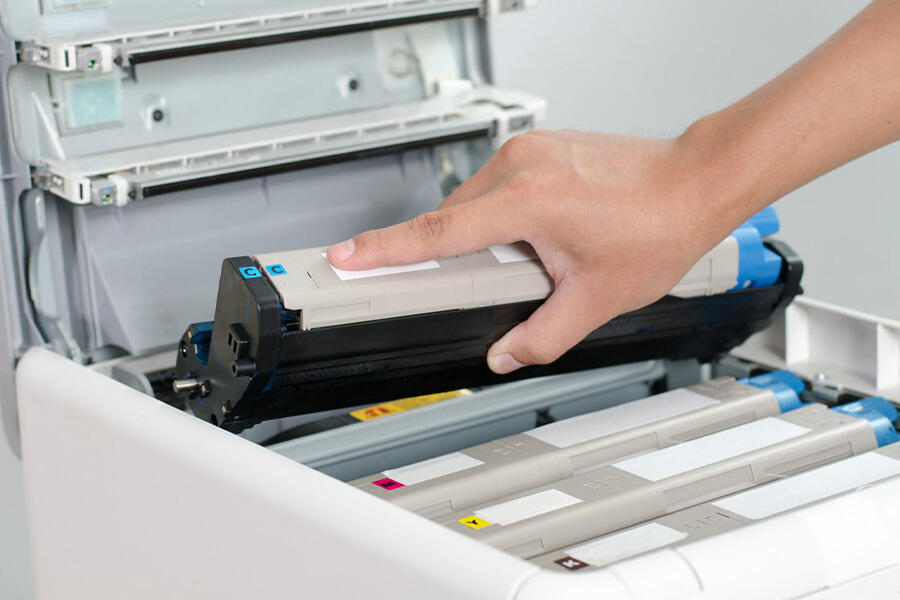
1. Clean The Printhead Regularly
Aftermarket ink can sometimes clog the printhead, leading to poor print quality. Use the printer’s cleaning cycle regularly to keep the printhead free of ink buildup. This helps prevent streaks or faded prints.
2. Use The Printer Often
If you don’t print often, the ink inside the cartridges can dry up and clog the nozzles. To avoid this, print a test page or any document every few days to keep the ink flowing and the printer in good shape.
3. Store Ink Properly
When you buy extra ink, store it in a cool, dry place, away from direct sunlight. This prevents the ink from leaking, drying out, or becoming damaged. Proper storage ensures the ink stays fresh and usable for longer.
4. Avoid Overfilling Cartridges
Overfilling ink cartridges can lead to leakage, ink spills, and problems with the printer. Fill the cartridge only to the recommended level to avoid making a mess and ensure the printer works correctly.
5. Turn Off The Printer Properly
Always turn off the printer correctly by following the manufacturer’s instructions. This ensures the printer’s ink flow system is properly sealed and prevents unnecessary ink waste or potential damage to the internal components.
6. Check For Firmware Updates
Sometimes, firmware updates can block the use of aftermarket ink. Regularly check for updates on your printer’s settings, and avoid automatic updates to prevent the printer from blocking third-party cartridges. This helps maintain compatibility.
Does Using Aftermarket Ink Void Your Printer Warranty?
Using aftermarket ink doesn’t automatically void your printer warranty, but it depends on the brand. Some companies may claim it causes issues, but they can’t cancel your warranty just for using third-party ink. If the printer is damaged by aftermarket ink, they may not cover repairs. Always check your printer’s warranty rules before using it.
Read Also: Intune Printer Deployment – A Complete Guide!
Frequently Asked question
1. Can using aftermarket ink affect my printer’s speed?
No, using aftermarket ink should not affect your printer’s speed if the ink is of good quality and compatible with your printer.
2. Why is aftermarket ink cheaper than original ink?
Aftermarket ink is cheaper because it doesn’t include the brand name premium and often comes from manufacturers that don’t spend on marketing or research.
3. How can I reset my printer to accept aftermarket ink?
You can try resetting the printer by turning it off, removing the ink cartridge, and reinstalling it. Check for any firmware updates or adjustments in the settings that might block third-party ink.
4. What happens if my printer rejects aftermarket ink?
If your printer rejects aftermarket ink, you may need to clean the cartridge chip, reset the printer, or disable any software updates that block third-party ink.
5. Does aftermarket ink last as long as original ink?
High-quality aftermarket ink can last just as long as original ink if stored and used correctly. However, cheap or poor-quality ink may run out faster.
6. Can I Use Refillable Ink Tanks For My Printer?
Yes, many printers like those from the Epson EcoTank series come with refillable ink tanks, which are great for using aftermarket ink.
7. Can I Print Photos With Aftermarket Ink?
Yes, you can print high-quality photos with aftermarket ink if the ink is of good quality and suitable for photo printing.
8. Is Aftermarket Ink Environmentally Friendly?
Aftermarket ink may be more eco-friendly, especially if you buy refillable ink tanks or reusable cartridges, reducing waste compared to disposable branded cartridges.
9. Are There Risks To Using Aftermarket Ink For Professional Prints?
For professional printing, it’s best to use high-quality aftermarket ink that matches the original ink quality to avoid potential issues with color accuracy or longevity.
10. What Should I Do If My Printer’s Ink Levels Don’t Show After Using Aftermarket Ink?
This could happen if the ink cartridge chip isn’t recognized. You can try cleaning the chip or manually ignore the ink level indicator if it doesn’t affect performance.
Conclusion
In conclusion, printers that use aftermarket ink can offer significant savings without sacrificing print quality. However, it’s important to ensure compatibility with your printer model to avoid potential issues. Choosing a reliable aftermarket ink brand can help you maintain consistent print results. Always consider the potential impact on warranty and long-term performance.
Read More:
- How Come My Credit Report Is Not Printing In Color – Fix Color Printing 2025!
- Printer Filter Pipeline Host High Cpu – Fix In 2025!
- What Printer Prints White Ink – Upgrade Your Printer 2025!
- Print Screen Not Working – 100% Fix Print Screen!
- What Is A Laser Printer – Upgrade Your Printing Knowledge 2025!
